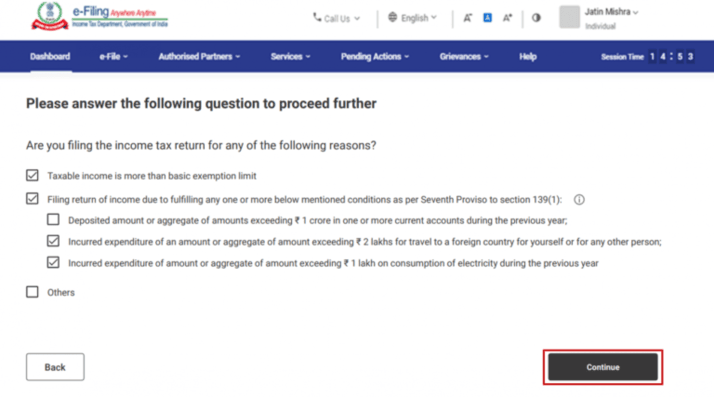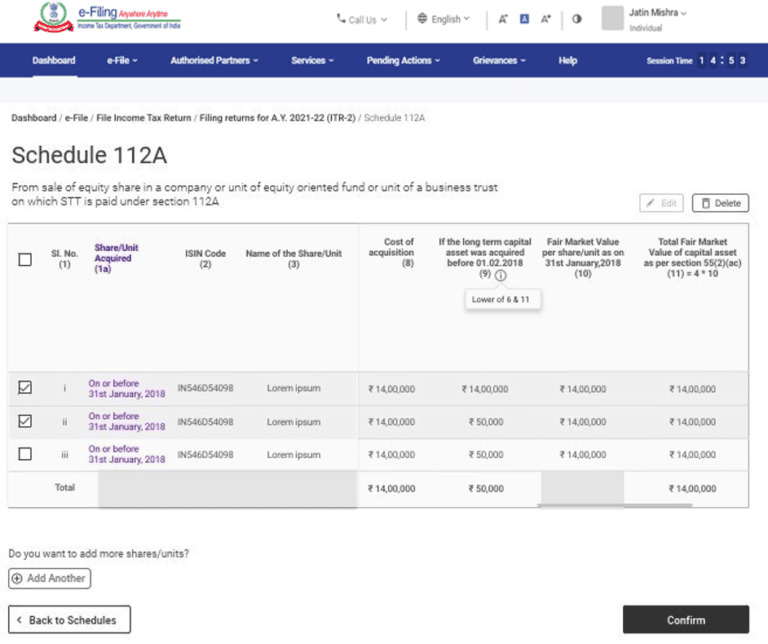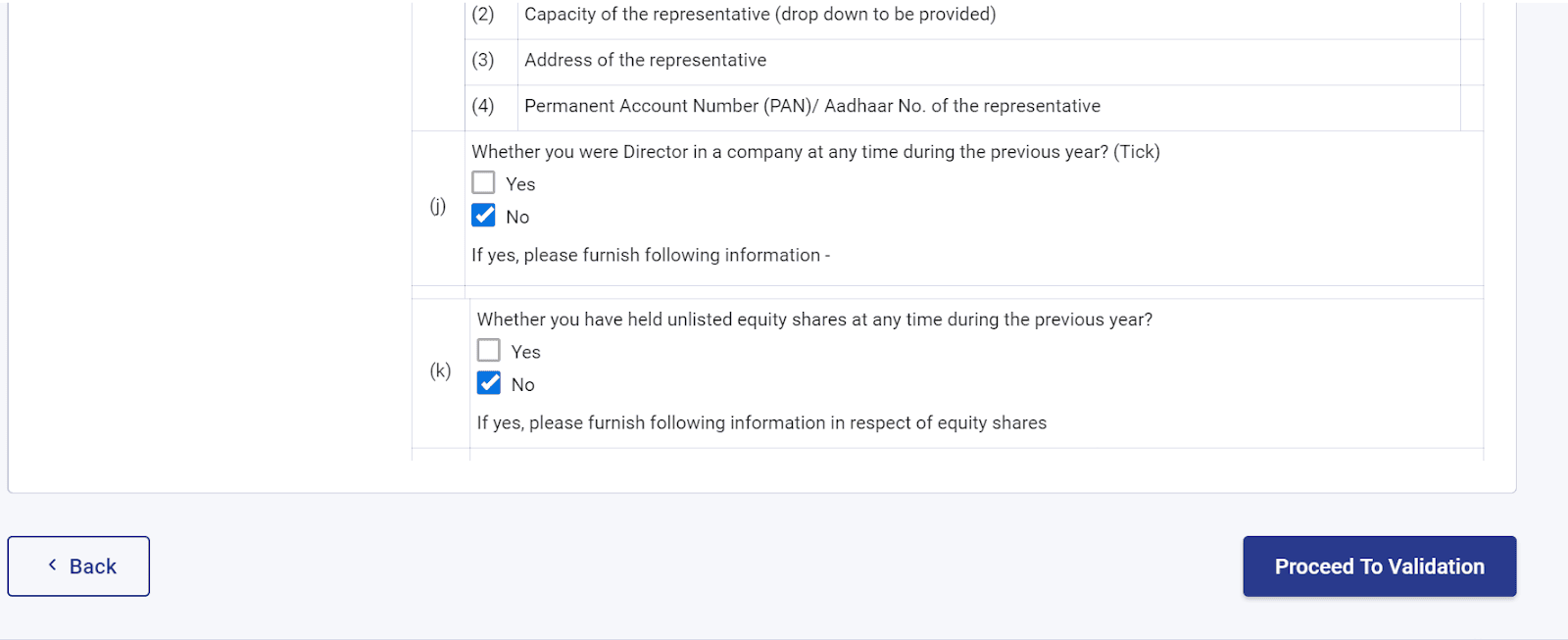
How To File ITR-2 For Income From Capital Gains FY 2024-25?
Every individual needs to file their taxes in the specified IT return form. ITR-2 is specifically designed for Individuals and HUFs with income from salary, multiple house property, capital gain, foreign assets and other sources. ITR-2 is commonly used for income exceeding 50 lakhs in a financial year or for those having investments in stocks, mutual funds, or assets that result in capital gain. However, if your total income for a financial year includes income from a business or profession, you must file ITR-3. ITR-2 is required, especially for Capital gains and foreign asset & income disclosure requirements.
Eligibility Criteria to File ITR-2 Form
If you fulfil the following criteria, then it is mandatory to file the ITR-2 form:
- Any Indian individual or member of the HUF (Hindu Undivided Family)
- Resident, RNOR and Non-Resident eligible for ITR-2.
- Salaried or pensioned individuals having income exceeding Rs.50 lakhs.
- Individuals earning capital gains from the sale of shares, mutual funds, immovable property, and virtual digital assets.
- If you earn rental income from multiple house properties
- If you earn more than Rs.5,000 from agricultural income
- If you have foreign assets or generate a foreign income
- If you are a director in any company (Foreign or domestic)
- If you hold an unlisted equity share in any company (Foreign or domestic)
- If you have any brought forward loss or loss to be carried forward under any head of income
- Individuals earning income through other sources like horse racing, lottery winning, etc.
Note: If you are earning from a business, any profession, partnership firm, etc., you are not eligible to file an ITR-2 form.

Documents Required to File ITR-2 Form
Check out the essential documents required for filing the ITR-2 form:
- Aadhaar Card
- PAN (Permanent Account Number)
- TDS certificates / Form 26AS
- Form 16 if you are a salaried Individual
- AIS/TIS statement from Income tax portal
- Challan of the paid taxes
- Bank account details
- Original return details (if you are filing for a revised return)
- Notice-related details (if you are filing in response to any notice)
Documents Required For Filing Capital Gain ITR Form:
- For Sale of Immovable Property :
- Sales and purchase deeds, improvement cost details, transfer expenses showing the sale value, purchase value and any cost of improvement.
- Full Address of the Property.
- Details of the buyer, like PAN and Aadhaar.
- Necessary supporting document if you claiming exemption u/s 54 or 54EC
- For Sale of Mutual funds, Equity shares or Virtual Digital Assets:
- For the Sale of Mutual funds, you can generate consolidated capital gain statements from CAMs and Kfintech.
- For the Sale of Equity shares, you can check with your broker for a capital gain statement or Tax P&L
- For the sale of Virtual Digital Assets, you can generate Transaction report or Profit and Loss report from the respective exchanges
- For any other types of capital, you must have a document showing the sale consideration and the purchase cost details as required.
Steps to File Income Tax Returns for Capital Gains on the E-Filing Portal
You can log in to the official portal of the income tax department and file your ITR for capital gains by following these steps:
Step 1: Select Income Tax Returns from ‘e-File’, and then click on ‘Income Tax Returns’ and select ‘File Income Tax Returns’.

Step 2: You need to select the assessment year, for instance, 2024-2025, and select ‘Online’ as the mode of filing.
Step 3: Next, select the form type (ITR-2) after choosing the status.

Select the reason for ITR filing and click on ‘continue’

Step 4: On the next page, you can find 5 types of schedules. Click on ‘General’ and select ‘Income Schedule’.

Step 5: Click on ‘Schedule Capital Gains’ and select the appropriate capital asset type from the list.
Step 6: If you want to file for STCG, click on ‘Add Details’ and enter the consolidated amount you have obtained from selling short-term assets and the Cost of Acquisition in a given financial year. However, for long-term capital gains, you need to enter details like purchase price, ISIN, transaction dates, selling price, etc., in Schedule 112A and click on 'Add'.

Step 7: After confirming the required schedules based on LTCG and STCG, you need to review Part B TTI.
Step 8: Once you have reviewed Part B TTI, If there is any additional tax liability, you will get a ‘Pay Now’ option through which you can make tax payments.
Step 9: Proceed with Click on ‘Preview Return’.

Step 10: Once reviewed, proceed with the validation

Step 11: Once it is validated and filed, you need to verify the filed ITR within 30 days. You can verify it online using Aadhaar OTP, via net banking or mail a printout of the signed ITR-V (Acknowledgement form) to the IT department’s Bangalore branch.

Final Word
So, now you know how to file long-term capital gain in ITR-2, the documents required, and much more. You can follow the steps mentioned above to file the ITR for both long-term and short-term capital gains without any hassles. Ensure entering the correct data in the required fields to avoid mistakes.
Frequently Asked Questions



